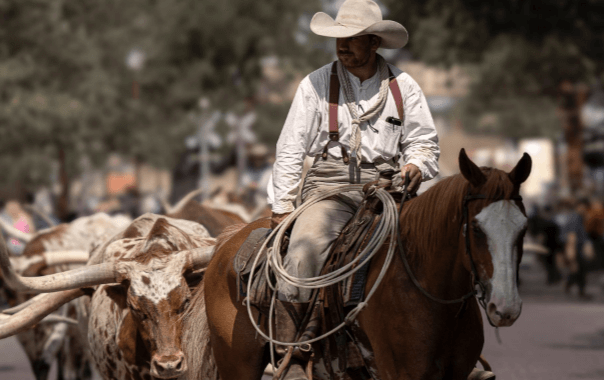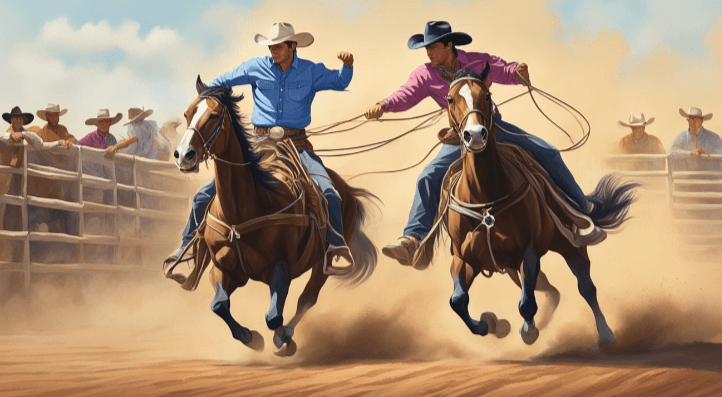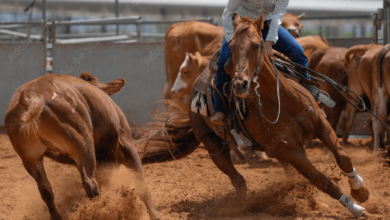What are the roles of different team members in team roping events?

Introduction
Team roping, a thrilling and fast-paced rodeo event, requires exceptional skill, precision, and teamwork. This event showcases the synergy between two riders, known as the header and the heeler, working in unison to rope and secure a steer. Understanding the distinct roles of each team member is crucial to appreciating the complexity and excitement of team roping. This article delves into the responsibilities, techniques, and strategies employed by the header and heeler, highlighting their critical contributions to the success of a team roping event.
Understanding Team Roping
The Basics of Team Roping
Team roping involves two riders and a steer. The objective is to catch the steer as quickly as possible using a lasso, with one rider (the header) roping the steer’s horns, and the other rider (the heeler) roping the steer’s hind legs. The clock stops once the steer is roped and immobilized, and time penalties are added for any mistakes, such as missing a loop or breaking the barrier.
Historical Background
Team roping has its roots in ranching practices, where cowboys would work together to handle cattle for branding or medical treatment. Over time, this practical skill evolved into a competitive sport, becoming a staple in rodeos across North America.
The Header’s Role
Primary Responsibilities
The header’s main task is to rope the steer’s horns. This requires a combination of speed, accuracy, and control. The header must also ensure the steer runs straight, setting up the heeler for a successful catch.
Techniques and Skills
Headers need to master various roping techniques, such as the “over the head” throw and the “hoolihan” throw for different steer movements. Additionally, headers must have a strong sense of timing and positioning, guiding their horse to match the steer’s pace.
Common Challenges
Headers often face challenges such as erratic steer behavior, requiring quick adjustments in their approach. Another challenge is avoiding time penalties, like breaking the barrier, which adds extra seconds to their overall time.
The Heeler’s Role
Primary Responsibilities
The heeler’s job is to rope the steer’s hind legs. Timing and precision are crucial, as the heeler must wait for the perfect moment to throw their loop while the steer is in motion.
Techniques and Skills
Heelers typically use a “backhand” throw, targeting the steer’s legs when they are in the air. This requires excellent hand-eye coordination and a deep understanding of the steer’s movements.
Common Challenges
Heelers must contend with the steer’s unpredictable movements, making it difficult to get a clean catch. Additionally, they must avoid penalties, such as catching only one leg, which incurs a time penalty.
Horse Selection and Training
Choosing the Right Horse
Both headers and heelers need highly trained horses that can handle the rigors of team roping. Headers typically use larger, stronger horses capable of handling the initial charge, while heelers prefer agile, quick-response horses.
Training Regimens
Training involves rigorous routines focusing on speed, agility, and responsiveness. Horses must be conditioned to react swiftly to commands and maintain their composure during the high-pressure moments of a roping event.
Teamwork and Coordination
Communication Between Riders
Effective communication between the header and heeler is vital. They must anticipate each other’s moves and adjust their strategies accordingly. This level of synchronization is often achieved through extensive practice and a deep understanding of each other’s riding styles.
Strategies for Success
Successful teams often develop specific strategies tailored to their strengths. This can include pre-determined signals, pacing strategies, and contingency plans for unexpected steer behavior.
Equipment and Gear
Ropes and Lassos
Headers and heelers use different types of ropes, each designed for their specific role. Headers typically use longer, softer ropes, while heelers prefer shorter, stiffer ropes for quick, precise throws.
Saddles and Tack
The right saddle is crucial for stability and comfort. Headers often use saddles with higher horns for better leverage, while heelers prefer lighter saddles that allow for quicker dismounts.
Protective Gear
Both riders wear protective gear, including gloves, boots, and helmets or hats. This gear not only ensures their safety but also enhances their grip and control during the event.
Training and Preparation
Practice Drills
Both headers and heelers engage in various practice drills to hone their skills. These drills include roping dummies, practicing throws, and refining their riding techniques.
Mental Preparation
Mental toughness is as important as physical skill in team roping. Riders must stay focused, manage stress, and maintain a positive attitude, especially during high-stakes competitions.
Physical Conditioning
Riders must be in top physical condition to perform effectively. This includes cardiovascular training, strength training, and flexibility exercises to enhance their overall performance.
Common Mistakes and How to Avoid Them
Headers
- Breaking the barrier: Headers must practice timing to avoid this costly mistake.
- Missing the horns: Consistent practice on different types of steers can improve accuracy.
Heelers
- Roping only one leg: Practicing precision throws can help avoid this penalty.
- Miscommunication: Regular team practice sessions can improve coordination and understanding.
Notable Team Roping Events and Competitions
National Finals Rodeo (NFR)
The NFR is the pinnacle of rodeo competitions, featuring the best team roping teams from around the world. Winning at the NFR is a prestigious achievement for any team roper.
United States Team Roping Championships (USTRC)
The USTRC hosts numerous events throughout the year, providing ample opportunities for team ropers to compete and showcase their skills.
World Series of Team Roping (WSTR)
The WSTR is another major event in the team roping calendar, attracting top talent and offering significant prize money.
Famous Team Ropers
Clay Tryan
Clay Tryan is a renowned header with multiple world championships to his name. His skill and consistency have made him a legend in the sport.
Jake Barnes
Jake Barnes is another iconic header known for his precise roping and strategic mind. His contributions to the sport have inspired many young ropers.
Rich Skelton
As a celebrated heeler, Rich Skelton has won numerous titles and is respected for his exceptional timing and technique.
The Impact of Team Roping on Rodeo Culture
Promoting Cowboy Traditions
Team roping plays a significant role in preserving and promoting cowboy traditions. It showcases the skills and values that have been integral to ranching culture for generations.
Encouraging Community and Sportsmanship
The sport fosters a sense of community and sportsmanship among participants. Ropers often form lifelong friendships and support each other, both in and out of the arena.
Future of Team Roping
Technological Advancements

Advancements in training tools and equipment are continually enhancing the sport. Innovations such as high-tech roping dummies and improved gear are helping ropers refine their skills.
Growing Popularity
Team roping is gaining popularity, attracting new fans and participants. Efforts to make the sport more accessible and inclusive are contributing to its growth.
FAQs
What is the primary role of the header in team roping? The header’s primary role is to rope the steer’s horns and ensure the steer runs straight, setting up the heeler for a successful catch.
What challenges do heelers face in team roping? Heelers must contend with the steer’s unpredictable movements and avoid penalties like catching only one leg, which incurs a time penalty.
What type of horse is best suited for headers in team roping? Headers typically use larger, stronger horses capable of handling the initial charge and maintaining control during the roping process.
How do team ropers train their horses? Training involves rigorous routines focusing on speed, agility, and responsiveness. Horses must be conditioned to react swiftly to commands and stay composed during high-pressure moments.
What are some common mistakes made by headers in team roping? Common mistakes include breaking the barrier, which incurs a time penalty, and missing the horns, which can result from inconsistent practice or timing.
What is the significance of team roping in rodeo culture? Team roping preserves and promotes cowboy traditions, showcasing the skills and values integral to ranching culture and fostering community and sportsmanship among participants.
Conclusion
Team roping is a captivating and intricate sport that demands exceptional skill, coordination, and teamwork. The roles of the header and heeler are distinct yet complementary, each requiring specialized techniques and strategies. Through rigorous training, effective communication, and a deep understanding of their horses, team ropers achieve remarkable feats in the arena. As the sport continues to evolve and grow in popularity, it remains a testament to the enduring legacy of cowboy culture and the spirit of competition.







